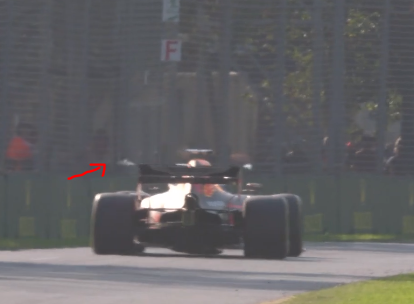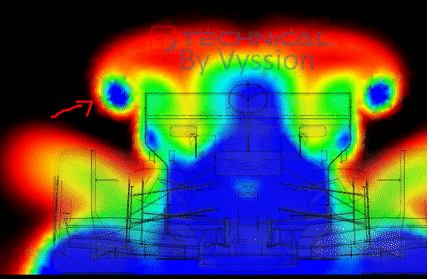So, F1technical released a pretty good article about some CFD calculations (post processing included) to show how the aero new 2019 rules affect the car and try to evaluate from that if the claims of improving overtaking are true.
The study uses a Perinn model, something I came to learn today about its existence. Since the model is a 2017 car, halo was added in the CAD and mesh over the wheels is reduced by simplification. The whole model is simplified by reducing also the prism layers and taking into account some inaccuracies arise from skewed cells and low mesh quality.
Interesting enough, the article notices that the downforce of the wings is increased by greater surfaces now whereas underfoor lost potential due to the lack of outwashing allowing tyre wake to go down the floor.
Looking at the numbers, increasing the width of the front wing by 200 mm helps increasing 10% downforce; harder to say for the rear wing since 2 dimensions are involved in the change and it’s harder to isolate the effect. Also, wheels impact is different since flow is now directed to them, not outwashing the flow means more air reaches the rear tires and rotating tires always reduce drag compared to little or no flow, so now rear wheel drag is reduced compared to 2018.

Looking above, the generation of downforce is reduced in the 2019 car specially in the floor behind the wheel. I suspect that is because now more air goes directly to the front wheel, generating more straight wake, affecting more the edge of the floor and not having such good air to push it under, losing suction potential. And yes, that is confirmed in the following pic


A nice thing I’ve noticed is that now on the race broadcasts, you can actually see the vortex of the rear wing and this goes because the wing is taller and “stronger”, generating more strong vortices 🙂

So now the impact of the wing is higher, surely one of the aims of the regulation. Consequences: more downforce, more drag, more impact on DRS and higher wake
From my own perspective, as a viewer, I have seen more boring stages in F1, Schumacher era f.e. However now, with Melbourne already behind us, I see the closer racing; not that it’s super thrilling but yes, now cars are more able to compete not only in the midfield but also upfront (Verstappen and Leclerc cases). Didn’t notice the difference or the big improvement with the DRS working on a bigger wing, or maybe I didn’t pay enough attention, but strategies and closer racing made Melbourne fun.
Now, this study is very conservative on the geometry of the wing, having an approach more like Red Bull and Toro Rosso I would say. Would be interesting to see both ends of the spectrum and analyze the Mercedes and the Ferrari in the same way. As far as Melbourne concerns, track is quite aero dominant and Mercedes was clearly superior. Is this the answer I’m looking for? Is Mercedes approach better?
Perhaps it’s too early in the season to say anything, maybe wait for Monza; and let’s hope Wolff is right “Ferrari just didn’t have the right setup”
Bunch of material right here!
https://www.f1technical.net/features/21995?sid=f2df6130ff6d1864d6f7c162236b10f0
https://www.racecar-engineering.com/articles/formula-1-2019-aero-changes/